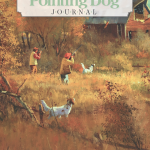Update: 2024 Upland Gamebird Hunting Forecast
By Dave Smith
This update to our 2024 Upland Gamebird Hunting Forecast incorporates the results of late summer upland gamebird population surveys conducted by state fish and wildlife agencies. This data measures recruitment of birds into the fall population, providing a more finely tuned forecast than was possible at press time for the print magazine in mid-July.
The promise of a grand autumn is now etched in the quantitative data of the state fish and wildlife agencies that conduct late summer roadside or brood surveys for upland gamebirds – and the results are jaw-dropping in some states! Load up the bird dogs.
The fortunes of gamebird hunters are largely driven by two elements of population ecology that play out in bird numbers each fall: (1) Abundance coming into the spring; and (2) the current year’s recruitment of birds into the fall population.
We build the annual Upland Gamebird Forecast with data available in mid-summer from spring crowing counts, whistle surveys, or drumming surveys that measure the population at the onset of the breeding season, a function of the previous year’s production and winter survival. It sets the stage for the level of gamebird production that can occur during the spring and summer. From there, we incorporate an assessment of how weather patterns may impact the current year’s production based on the technical input of the upland gamebird experts in each state. Some states, like Iowa, have developed sophisticated weather models that can accurately predict fall populations. However, the most useful data is the late summer surveys that measure the actual current year’s production – and that’s what we use here to tune up our forecast.
Several state fish and wildlife agencies recently released the results of the roadside surveys or other brood surveys they conducted in August, and some of the results were eye-popping!
Here’s a few highlights: Pheasant populations are up dramatically in the core prairie belt from North Dakota down through western Nebraska and western Kansas; this year marks the long-awaited bobwhite quail explosion in western Oklahoma through the Rolling Plains of central Texas, with dizzying quail densities recorded on the summer surveys; and it will be an epic year to hunt prairie grouse in South Dakota. Overall, it confirms the mid-summer wishful thinking: It is going to be a great autumn to hunt upland gamebirds in many states. As always, we emphasize pheasants, the No. 1 species for our readership. Here’s the full update!
Jump to:
Pheasants
The sweet swath for 2024 rooster hunting will be the western Great Plains from the Dakotas to southwestern Kansas, thanks to timely moisture this spring and summer that produced lots of young birds. The favorable conditions enabled populations to expand from what were already very respectable levels in the northern stretch of this range. In the southern reaches, populations had been very low, but conditions were so good this year the recovery registered as a “boom” in some key regions. The Upper Midwest pheasant picture isn’t as rosy, but it is balanced by the fact that numbers have been very strong over the last couple of years. In Iowa, a modest decline from a season in which over a half million pheasants were harvested will still equate to some excellent hunting this fall. Here’s the pheasant depth:
North Dakota will be an outstanding destination again this year following a productive 2023 campaign in which hunters harvested over 319,000 pheasants. This year’s brood surveys revealed another solid uptick in pheasant numbers. Total pheasants observed (94.5) and broods observed (11.6) per 100 miles are up 25 percent and 33 percent, respectively, from last year, according to Rodney Gross, North Dakota Game, Fish & Parks. The downside was that some cold snaps in June impacted this year’s brood survival, reflected in the average brood size (5.5) declining by 13 percent from 2023.
Nevertheless, pheasant populations will be very good in the Northwest region where the surveys revealed 164 pheasants and 20.8 broods per 100 miles with an average brood size of 5.3 chicks, up from 159 pheasants and 19.1 broods last year. Likewise, pheasant numbers expanded in the traditionally strong pheasant country of the Southwest region with 119 pheasants and 13.8 broods observed per 100 miles, up from 86.2 pheasants and 9.7 broods last year. Average brood size was an impressive six chicks per brood. The Southeast region surveys revealed 57 pheasants and 7.9 broods per 100 miles, up from 53 pheasants and 5.9 broods in 2023, with an average brood size of 4.6 chicks. Pheasant numbers doubled in the Northeast region but with only 37 pheasants observed and 4.3 broods per transect, it still represents the lowest pheasant densities in the state. The take home from NoDak is that the western part of the state again looks good, according to Gross. “We had good reproduction in western North Dakota. The population in the eastern part of the state is not as robust as it used to be due to conversions of grassland to corn and soybeans. The outlook for the season is that it should be good hunting in western half of the state.”
Kansas looks to be the sleeper state this year following several years of drought-related impacts. The state received heavy doses of rainfall in the summer of 2023. While the precipitation was too late to support last year’s pheasant production, it spurred robust vegetative recovery and yielded excellent habitat conditions coming into this spring. What followed was the recipe for a pheasant explosion: The high plains received excellent rainfall this spring and early summer, spurring abundant arthropod resources and an apparent record grasshopper emergence, creating abundant food sources for pheasant chicks.
Pheasant populations responded in a big way to the excellent nesting and brooding conditions with high nest survival and large broods, reported Jeff Prendergast, Kansas Department of Wildlife, Parks, and Tourism. The statewide roadside survey index of pheasants spiked by a staggering 108 percent from last year! The Southern High Plains will be the go-to destination with .39 pheasants per mile recorded, a massive 511 percent increase over last year’s pheasant index of .06 pheasants per mile. Populations in Stevens County (1.69 pheasants per mile), Hamilton County (.87) and Morton County (.85) were particularly high. The Northern High Plains also looks promising this year with a region-wide index of .37 pheasants per mile, a 117 percent increase over last year, led by high counts in Scott and Greeley counties. The surveys revealed modest numbers in the central part of the state, including a 104 percent increase in the South-Central Prairies and generally stable numbers in the Smoky Hills region. Granted, Kansas pheasant populations have declined dramatically in recent years due to drought but here’s the thing to keep in mind: Pheasant hunting in the High Plains this year will involve lots of young birds!
Pheasant populations are also up in Nebraska thanks to similar weather patterns, including good spring and summer precipitation that spurred an abundance of insects and resulted in excellent brood survival. The July Rural Mail Carrier Survey results showed a 19 percent population increase statewide, according to Nebraska Game & Parks Commission. Importantly, the pheasant rebound was pronounced in the two areas of the state with the greatest pheasant abundance – the Sandhills (+21 percent) and the Southwest (+41 percent). As these regions go, so goes pheasant hunting in Nebraska! The Central and Southeast regions also saw upticks that exceeded the five-year averages by a whopping 90 percent and 55 percent, respectively. Habitat and pheasant numbers are more isolated in these regions but there will be some very good hunting where quality habitat exists.
In Iowa, the roadside counts showed statewide pheasant numbers declined by 14 percent compared to 2023, according to Todd Bogenschutz, Iowa Department of Natural Resources. However, the important context is that hunters tallied over 500,000 roosters last season, the best pheasant harvest since 2007. The 2024 counts were very similar to the pheasant numbers on the 2021 and 2022 counts, so it should still be a very good year. Bogenschutz expects that the Iowa pheasant harvest will be between 350,000 and 400,000 roosters this fall. Bogenschutz notes that Iowa’s corn and soybean harvest should be mostly complete by the season opener if dry conditions persist into the fall, which typically leads to good early season success. The Northwest, North Central, Northeast, West Central and Central regions had the best overall densities, but populations in the East Central and Southeast regions may be slightly higher this year. While the statewide trend was done, Bogenshutz notes that individual regions did not show statistically significant declines; populations were lower on some routes and higher on other routes compared to last year. Overall, it still looks like a good year to chase roosters in the Hawkeye State.
In Minnesota, pheasant numbers will be very similar to last year with a range-wide index of 52.1 pheasants per 100 miles compared to an index of 51.2 in 2023. Despite the stable trend, the surveys revealed notable differences across the state. The counts revealed a 70 percent increase in the East Central region. Perhaps more importantly, populations increased slightly in the West Central (+6 percent) and South Central (+8 percent) regions, the regions with the second- and third-highest pheasant abundance in the state. The Central region has lower abundance, but the survey revealed a major increase (+34 percent) from last year. Minnesota’s famed Southwest region saw a decline of 29 percent but the index of 81.8 pheasants per 100 miles was still the highest in the state. Overall, pheasant populations are relatively strong in Minnesota as the index in the Southwest, South Central, West Central, and Central regions are well above the 10-year average. According to Nate Huck, Minnesota DNR. “In general, the pheasant population appears to have fared better than expected after the spring flooding. Bird numbers appear similar to last year throughout most of the pheasant range. Hunters can expect to see some younger broods on the landscape with birds that renested after the floods. Things are very dry across Minnesota for the opener. This has led to crop harvest being well ahead of schedule.”
In Wisconsin, the rural mail carrier survey revealed a 35 percent increase in pheasant numbers from 2023, which is 20 percent above the five-year average. The highest pheasant densities were recorded in the Northwest counties.
And then there’s South Dakota. The South Dakota Game, Fish & Parks Department no longer conducts pheasant surveys so technically we should breeze past the state in this update. However, the significance of the state warrants digging up some data and providing anecdotal information that may be helpful to traveling pheasant hunters. Here’s the one key data-based fact: The pheasant harvest last season was a staggering 1.24 million roosters, according to South Dakota GFP, the highest level of harvest in the state since 2015! To put that in perspective, the golden era of South Dakota pheasant hunting from 1998-2012 ranged (with only one outlier) from 1.18 million to 1.95 million roosters harvested. The current pheasant abundance in South Dakota is clearly in the ballpark of the best we’ve seen since the famed Soil Bank Era of the late 1950s and early 1960s. So, while we don’t have any survey data to provide an indication of this year’s population, we do know that the state largely avoided major drought conditions and most of the primary pheasant range was not affected by the flooding that impacted the area between Sioux Falls and Sioux City. According to the department’s 2024 Upland Outlook: “Adequate rainfall set up habitat conditions well for a successful nesting season and reports of large-sized broods throughout the pheasant range are rolling in from staff, landowners, and the public.” From the perspective of this writer, it will be a very good year to hunt roosters in South Dakota!
Prairie Grouse and Huns
The prairie grouse hunting in the Northern Great Plains the last few years has been incredible, and continued strong populations sharptails, prairie chickens, and, in some locations, Hungarian partridge will make for some memorable days again this fall.
South Dakota, without question, will be the No. 1 prairie grouse destination this fall. Hunters tallied a whopping 69,442 prairie grouse in 2023 with a 1.9 young-to-adult ratio, according to South Dakota GFP. Breaking down those numbers, the grouse harvest was the highest in the last quarter century and the age ratio was the sixth best in the last 20 years. Last summer’s weather conditions clearly led to a bumper crop of sharp-tailed grouse and prairie chickens. Better yet, conditions have been even more favorable over the last year, creating the magic formula of high populations coming into the spring and then a subsequent near-perfect spring and summer. According to South Dakota GFP: “The 2024 prairie grouse hunting outlook is expected to be better than 2023. An easy winter with high survival, partnered with good weather during spring and summer has created excellent grassland and subsequent nesting and brood rearing conditions in a majority of central and western South Dakota. We expect the current favorable range conditions to contribute to good prairie grouse production once again, resulting in increased hunter success.” Get ready for a harvest that could conceivably creep upwards toward six digits this year!
In North Dakota, the August survey revealed that sharptail populations are down by 20 percent (23 sharptails and 2.4 broods per 100 miles) but still above the 10-year average. The brood numbers and average brood size of 5.5 was consistent with mediocre sharptail production, according to Gross. Huns declined by 20 percent from last year’s near all-time record levels but remained at high densities (29 partridge per 100 miles). Observers recorded 2.3 broods per 100 miles, the second highest in 20 years, but brood sizes were smaller this year at 8.3 partridge per brood. Huns declined by 37 percent from last year in Iowa and by 58 percent in Minnesota.
Finally, in Nevada, Huns are continuing to expand. The Nevada Department of Wildlife’s chukar surveys revealed good numbers of Huns with an impressive 5.5 young-to-adult ratio. Nevada DOW reported that survey numbers are significantly up from 2023. Promising areas to hunt Huns include the east flanks of the Santa Rosa Range, Independence and Tuscarora Ranges, and public lands around the flanks of the Ruby Mountains. Huns are also becoming more prevalent in the northwestern counties.
Bobwhite Quail
Bobwhite quail numbers have increased dramatically over the last year in the Rolling Plains of Texas, western Oklahoma, and the Southern High Plains of Kansas, landscapes that are the stuff of bobwhite legend! These regions have been hammered by drought and summer heat so much in recent years that the enthusiasm for quail hunting was seemingly drifting away. However, as colorful former Texas Wildlife and Parks Department quail manager, Robert Perez, was prone to say when consistent rains turned good Texas quail country lush, and populations exploded: “Ring the bell. It’s time to dust off the shotgun, load up the bird dogs, and go quail hunting.”
In Texas, the rain returned over the last year and bobwhite populations have rebounded significantly from near-record low levels in several regions, said John McLaughlin, Texas WPD. Quail hunting has mostly been a South Texas affair in recent years as the region represented over 75 percent of the statewide harvest. Populations are still strong in that region, with the surveys showing 9.13 quail per route compared to 9.59 last year and a 15-year average of 9.50. McLaughlin says habitat conditions were favorable but variable throughout the region. The biologists in the eastern half to the coast are optimistic for a good season, but more caution exists in the west amongst a wave of mixed reports.
The big news in Texas this year is that of the quail explosion in the Rolling Plains. The surveys revealed 16.50 quail per route, compared to 4.3 last year and a 15-year average of 11.75. This is big news in Texas quail hunting circles. For context, hunters tallied over 49,600 bobwhites last year and the counts are four-fold higher headed into this season – whoa! Mclaughlin tempers the enthusiasm slightly based on extreme heat in September, but overall is very excited about the prospects. “The Rolling Plains bobwhites jumped much more than expected. This follows a trend across the region and represents a notable shift in habitat and birds. Things are very good and looking up.”
Oklahoma is also poised for a banner quail season, according to Tell Judkins, Oklahoma Department of Wildlife Conservation: The statewide quail index from the August roadside quail survey was 6.52 quail per route, compared to 2.23 last year. This is 29 percent above the 35-year statewide average of 5.06 quail per route and 92 percent above the 10-year average of 3.39 quail per route. The quail explosion is most pronounced in the Northwest and Southwest regions with a staggering 13.31 and 13.42 quail per route, respectively. The five-fold increase from last year in the Southwest region is off the charts! Granted, Oklahoma is experiencing some drought and Judkins notes that the October surveys are most accurate, but there’s a lot to like about the bobwhite picture in western Oklahoma.
Kansas will also offer some excellent bobwhite hunting this season. The statewide quail index was up 42 percent from last year and the population spiked in two key regions of southern Kansas, with a 125 percent increase in the Southern High Plains and a 74 percent uptick in the Flint Hills. Prendergast explains that the turnaround is part of a bigger regional trend: “Quail have seen improvements across a wide region extending from the Rolling Plains of Texas up into Southern Kansas. We experienced increased production across most of the southern regions of our state. The Southern High Plains and Flint Hills will have the highest regional densities in Kansas this year.”
In Nebraska, bobwhite populations are generally stable with a seven percent uptick from 2023. The July Rural Mail Carrier Survey results showed that that the two regions with the highest densities of quail, the Southeast and Republican regions, both spiked by 24 percent this year. In Iowa, bobwhite populations dropped slightly from 0.7 quail last year to 0.5 quail per route, a non-significant decline. The Southwest region had the best overall quail numbers in 2024, followed by the West Central region.
Chukars
Nevada will offer some excellent chukar hunting again this winter, but the promise of an epic year has tapered off a bit due to summer drought conditions. The Nevada Department of Wildlife’s summer chukar surveys resulted in a statewide average production value of 4.8 chicks per adult, a 20 percent decline from last year but a value that still leads to an expanding population. Even more encouraging, seven of the eight counties in the state reported young-to-adult ratios above the 4.5 level that is needed for an increasing population. The surveys showed excellent production in Washoe (7.1 chicks per adult), Humboldt (6.9), Churchill (6.6), Mineral (5.6), Lander (5.2), Eureka (4.9), and Elko (4.9) counties. Pershing County dropped this year to a 3.3 ratio of chicks per adult but had the highest number of young chukars surveyed of any county. However, the ratio in western Pershing County was 5.2 so there will clearly be some excellent chukar hunting available this season. Over 1,000 young chukars were observed in all counties except Washoe and Mineral. The hot tip this year is Churchill County where above average winter and spring moisture received throughout the county improved habitat conditions, according to Nevada DOW.





